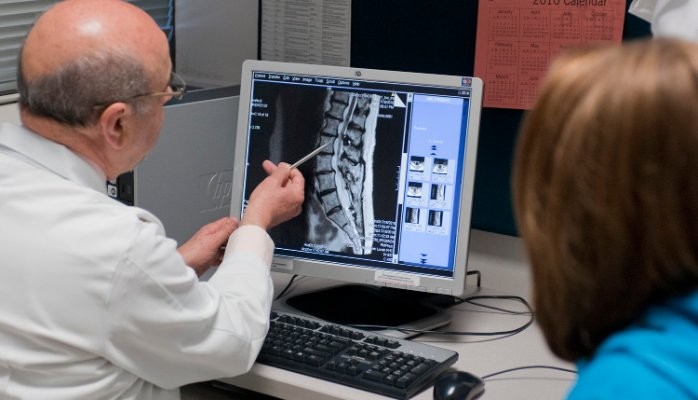
Can You Guess the Most Common Medical Procedure?
Quick, name the most common medical procedure.
Chances are, you didn’t guess “communication,” but physicians are said to have more than 200,000 patient interactions over a lifetime. Each one is an opportunity to share information, motivate behaviors, and build a relationship.
We’ve found that physician communication focused on building an authentic relationship with the patient has profound therapeutic benefits. Relationship-centered communication not only produces better outcomes and a better patient experience, it can be a protective against career burnout.
Still, communication is rarely taught in medical school. Most physicians develop communication strategies through trial and error, but close study of physician-patient interactions shows that many effective communication skills are counterintuitive. Consider, for instance, the importance of listening. Research shows that physicians will ask a patient a question, and then interrupt patients’ answer after only 18 to 23 seconds. The result is that patients don’t get to tell their story; they may never utter their main concern.
Physicians who don’t listen may fail to diagnose – or misdiagnose – patient problems, and then wonder why.
Physicians should begin their patient encounter with an open-ended question. They need to keep asking, “What else?” until all the patient concerns are addressed. Some physicians fear that if patients are allowed to talk, they will go on and on forever, but according to one study, patients who are not interrupted usually complete what they have to say in about 90 seconds. Another study shows the average outpatient having 1.7 concerns – and the main concern is rarely the first mentioned. Offering open-ended inquiries and allowing patients to talk makes it less likely that patients will introduce their main concern as a “doorknob question.”
Empathy is another critical part of communication. Most physicians feel empathy for their patients, but fewer know how to demonstrate it. Empathy can be communicated by words or gestures. I’ve written before about how my experience running a wartime military hospital taught me the value of simple touch to communicate reassurance. Verbally, we must let patients know we support them and appreciate the difficulty of what they’re going through. They should know that their feelings are valid, and that we sense their emotions.
Over the past six years, Cleveland Clinic’s Office of Patient Experience has focused intently on these issues. They developed and refined a model for relationship-centered communication they call the REDE Model. REDE stands for Relationship: Establishment; Development; Engagement. Very broadly, it gives providers an adaptable toolkit of habits, behaviors and strategies to establish, develop and engage patients in a therapeutic relationship. It reduces the asymmetry of the physician-patient encounter, and makes both parties collaborators.
We trained more than 4,000 Cleveland Clinic staff doctors and almost 400 advanced care providers in these special skills since 2011. Since that time, our HCAHPS scores for Doctor Communication have improved 40 percentile points. Studies show that physicians who master relationship-centered communication gain self-confidence, become better diagnosticians, and take more satisfaction in their work. The result is less burnout, fewer malpractice claims, and less-expensive care.
In May, more than 2,000 people from around the world came to Cleveland for the 2015 Empathy+Innovation Patient Experience Summit, presented by the Cleveland Clinic Office of Patient Experience. The theme was “Empathy Amplified,” and the emphasis was on all aspects of communication in the healthcare setting.
Patients today have more healthcare choices than ever. Many value providers’ interpersonal skills at least as much as their medical judgment. If you lack these skills, you’re likely to lose patients. We need better communications skills to survive and thrive. It’s the smart thing to do and the right thing to do for our patients.
Product Design
7yExpressed empathy is something that patients intuitively know. Just as caregivers can often quickly sense when nonverbals indicate a tacit or unaddressed issue, patients who have been in the hospital for long periods also are quickly aware when their caregivers are truly interested or not, often by simple and quick interactions. Taking time with patients, being unhurried is often a good way to develop rapport.
Editorial Director | Communication Strategies | Content Developer | Brand Management | Health & Medical
8yWe are having a similar conversation on Medscape on how EMR may be killing communication with patients. This is valuable info - thx.
Medical Education, Communications, HCP Advocacy Development, CME
8yI guessed, I'm a communications major 😉 And my father is an internist.
National Sales Manager
8yI found this an encouraging read. This is sound evidence that in a world where technology has taken the place of personal contact never should we take the relationship building process for granted.
Building Acoustics Guru - Writing, Speaking, Teaching, Influencing, Creating, Testing
8yWell then acoustics and noise control seems pretty important.